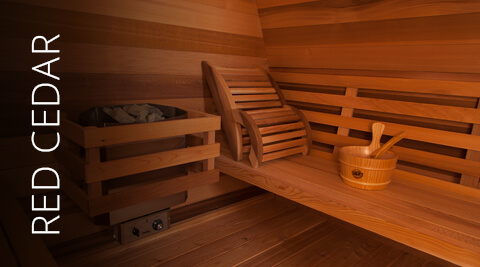The Buzz on Traditional Sauna
The Buzz on Traditional Sauna
Blog Article
The 45-Second Trick For Traditional Sauna
Table of ContentsExamine This Report about Traditional SaunaSome Known Details About Traditional Sauna Examine This Report about Traditional SaunaThe Ultimate Guide To Traditional Sauna
The majority of the weight shed in a sauna is water loss and is re-gained upon rehydrating. Nevertheless, certainly sauna can be an important component of a healthy weight management program. To check out the differences between standard and IR saunas, I will separate these right into proven, theoretical, and made differences.Hence, the most popular point in the saunawhich goes to the ceiling straight over the sauna heateris typically between 185 and 190 F. Traditional Sauna. Claims that a typical sauna surpasses 200 F is just not true and not relevant for electrical saunas marketed in the United States. The temperature for a far-infrared sauna is usually set between 120 and 140 F; nevertheless, unlike the typical sauna, the goal in and IR room is not to accomplish a high temperature
Because of this, the temperature distinction is virtually irrelevant, since profuse sweating results in both sauna types, yet the technique of heating up the body is various. In an IR sauna the bather will certainly feel hot and will sweat a lot, but at much lower temperature levels. Thus, if the objective is to spend longer durations of time in the sauna, the IR sauna is an excellent selection.

The Only Guide for Traditional Sauna
When the high temperature is accomplished, the elements cycle on and off to maintain the heat. Many standard sauna users enjoy pouring water over the rocks to develop heavy steam to elevate sauna humidity degrees. The advantages of putting water over the rocks consist of: making the area much more comfortable, moistening the nasal passages, and enabling the usage of aromatherapy by blending important oils with the water.
In a far-infrared sauna, the warmth waves permeate the body to successfully heat up the body and increase the body core temperature level. To accomplish this raised temperature, Far-infrared emitters produce infrared energy which is close to the same wavelength as that which the body naturally emitsoften referred to as the "Important Variety" of 7 to 14 microns), so the power is well gotten by the body.
When the energy goes into the body, it creates the body temperature level to enhance and eventually causes sweat. In an infrared sauna it is necessary for the emitters/heaters to stay on practically frequently. Considering that there is no mass of rocks to preserve warm, the sauna will certainly cool down if the emitters shut off.
As discussed above, the sauna bather in an infrared space intends to position himself in front of running emitters to obtain maximum advantage from the heat. The heating time for the 2 areas can his comment is here be really different, depending on just how the rooms are utilized. For a conventional sauna, a bather ought to enable 30-40 minutes for the space to accomplish a wanted temperature and to effectively pre-heat the rocks.
The Of Traditional Sauna
A well created sauna will generally attain a temperature level of 150-160 F in concerning 30-40 mins. For hotter temperatures, the area may need to heat for a longer period.
To some, 15 minutes was "thrown away" while the infrared power warmed the wood panels as opposed to heating up a body, while others locate a pre-heated area to be much more comfortable and believe an elevated beginning temperature level is needed to begin perspiring. The length of advised usage for each room is about the exact same (10-15 mins per session); nevertheless, due to the lower air temperatures and the capability to really feel the effects of infrared warmth much faster than a standard sauna, it is not uncommon for an individual to spend a total of 20-30 minutes in an infrared sauna.
Traditional saunas have a tendency to be bigger (thus make use of more electricity) than infrared saunas, although conventional saunas are certainly available in one and 2 person dimensions also. For a two-person standard sauna, 5x6 or 5x7 dimension is most popular. The leading bench can comfortably seat 2 or three people and is additionally enough time to rest throughout the sauna session.


The average price per kWH of electrical energy in the united state is approximately $0.11, so a 4.5 kW heater will set you back roughly $.50 to run for one hour, if the heating system click for more info runs continually for one hour. Generally a sauna heating system will certainly compete 75% of the initial hour and 50% of succeeding hours on because the elements cycle once the set temperature is attained.
Some Ideas on Traditional Sauna You Need To Know
A two person far-infrared area is usually physically smaller sized than a traditional sauna, typically about 4' x 4' or smaller sized. The IR heater is commonly 1.5-1.7 kW making use of a 120 volt 15 amp plug-in service. Since the area can be made use of earlier than a sauna room, we will certainly presume read the space is used for to of an hour including heat up time.
Ultimately, there is a hardly ever discussed difference in the social experience between the 2 rooms. While our society has actually shed a few of the social advantage of the typical sauna experience, it can be really socially gratifying. From family time in the sauna, to heart-felt discussions with loved ones, to sauna partiesthe typical sauna experience can lead to intimate mingling.
Many higher end infrared spaces include tinted light therapy, audio systems and full-glass fronts.
Report this page